Let’s Talk About the Targaryens’ (And in This Case, Aegon’s) Prophetic Dreams
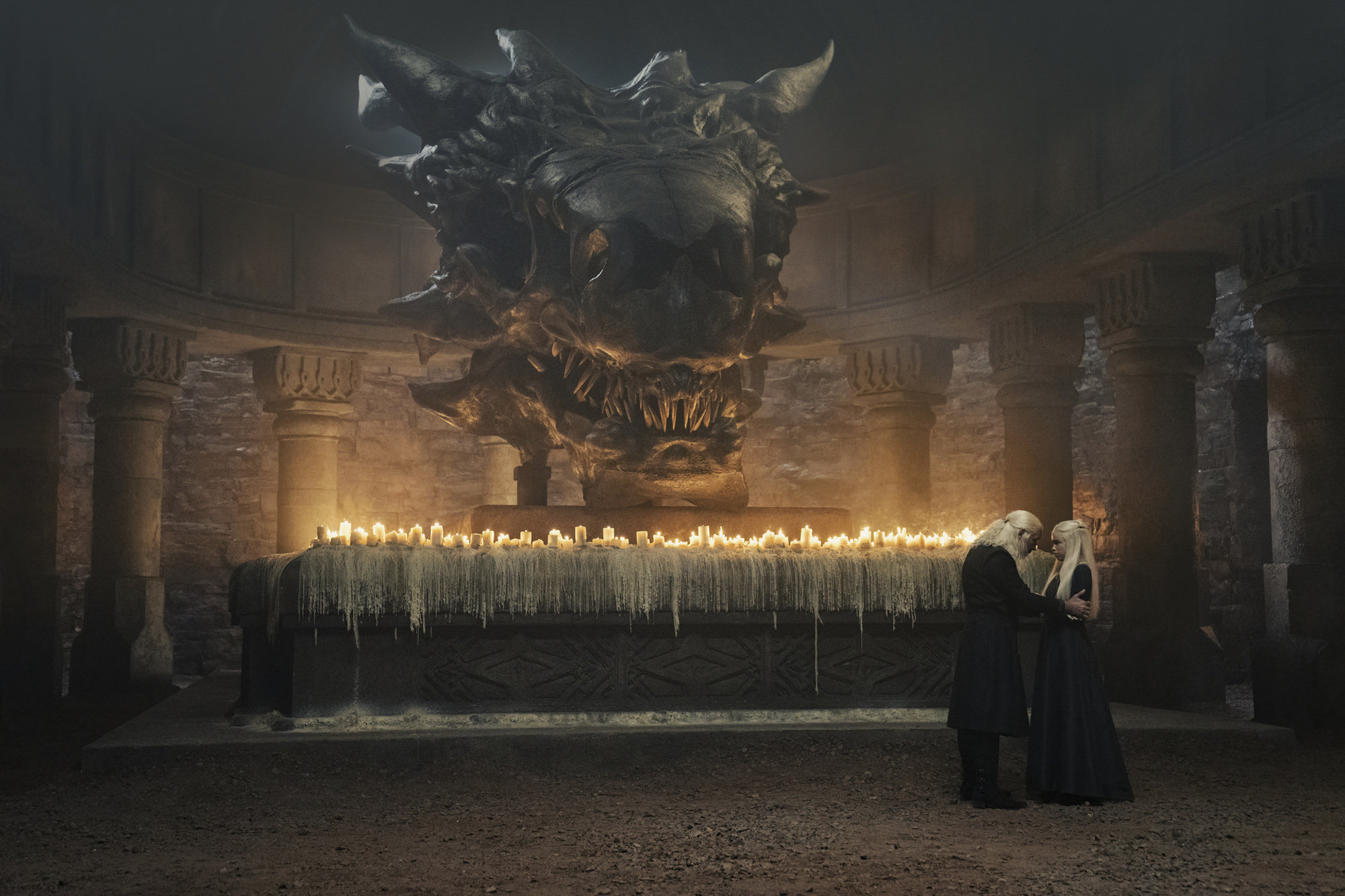
House of the Dragon has made several intriguing references and callbacks to both its source material and its original series. Its most interesting one so far (or annoying one, depending on how you look at it) is the connection established by the end of its premiere, which directly addresses Game of Thrones’ final conflict: the war with the Others.
If you may recall, towards the end of the first episode, King Viserys calls upon Rhaenyra, and the two have a little chat before the shrine of Balerion the Black Dread, House Targaryen’s great dragon that was mounted by Aegon the Conqueror (and last ridden by Viserys himself). The scene is intercut with the various lords of Westeros coming to swear fealty before the Iron Throne, recognizing Rhaenyra as heir (Lord Stark must have hated having to travel all the way to King’s Landing for just that) as Viserys explains to his daughter a prophecy that has been passed from sovereign to heir for generations:
“Our histories… They tell us that Aegon looked across the Blackwater from Dragonstone and saw a rich land ripe for the capture. But ambition alone is not what drove him to conquest. It was a dream. And just as Daenys foresaw the end of Valyria, Aegon foresaw the end of the world of men. ‘Tis to begin with a terrible winter gusting out of the distant north. Aegon saw absolute darkness riding on those winds. And whatever dwells within will destroy the world of the living. When this Great Winter comes, Rhaenyra, all of Westeros must stand against it. And if the world of men is to survive, a Targaryen must be seated on the Iron Throne. A king or queen strong enough to unite the realm against the cold and the dark. Aegon called his dream the Song of Ice and Fire.”
So what does it all mean? What are these dreams Viserys keeps talking about in the first place? And why did he say that rarely have people in his family been “dreamers”? And what exactly did the Conqueror know about the Long Night?
Dragon Dreams
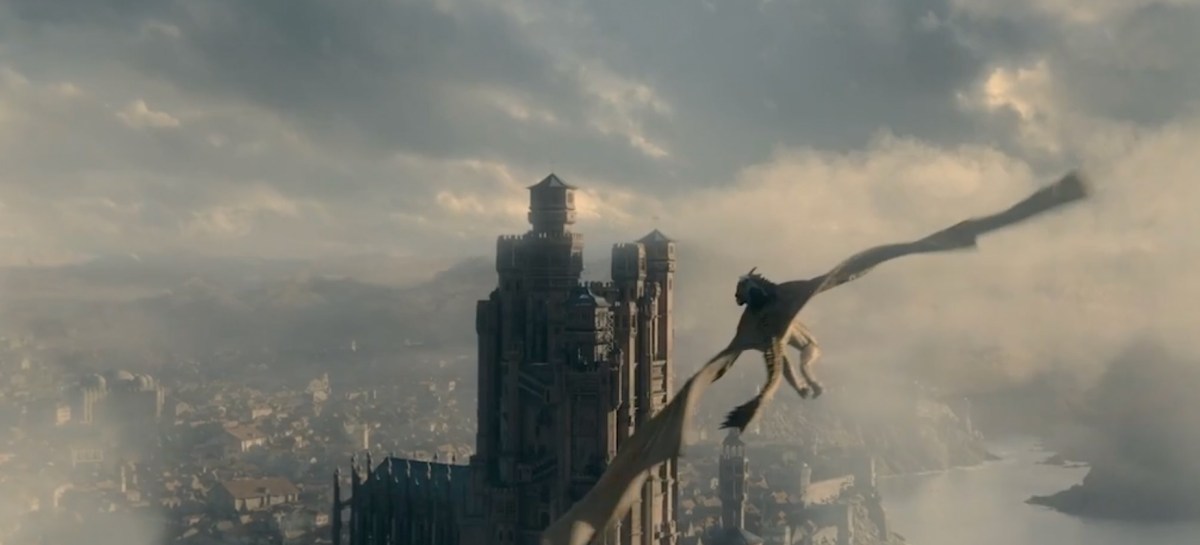
Dragon dreams are prophetic visions common to those with the blood of the dragon. It has never been explained why the Targaryens have these dreams but it runs in their family. Among the first dreamers (that were written about) was the young girl Viserys talks about—Daenys. As we all probably know by now, the Targaryens are not native to Westeros and actually come from Old Valyria. Sometimes known as Daenys the Dreamer, she foresaw a great disaster that would lead to the destruction of Valyria, and told her father, who in turn decided that the family would relocate to Dragonstone and claim it as the seat of their House. Twelve years later, Valyria did fall, making the Targaryens among its last former inhabitants and the last dragonriders.
Several other Targaryens are also known for having the same gift. There is, of course, Daenerys Targaryen herself, Prince Daeron the Drunken, and, as House of the Dragon has now revealed, Aegon the Conqueror. As Viserys explains, their histories generally do not explain why the Conqueror came to Westeros (and the same applies for the actual books and Thrones). But given that George R.R. Martin is one of the spinoff’s co-creators, we may see this reveal in The Winds of Winter and A Dream of Spring (That is, if they ever see the light of day. Come on, George. We’re still waiting). The secret does put several things into better context, but at the same time, also leaves a lot of questions for the events that unfolded in Thrones.
The Prince That Was Promised
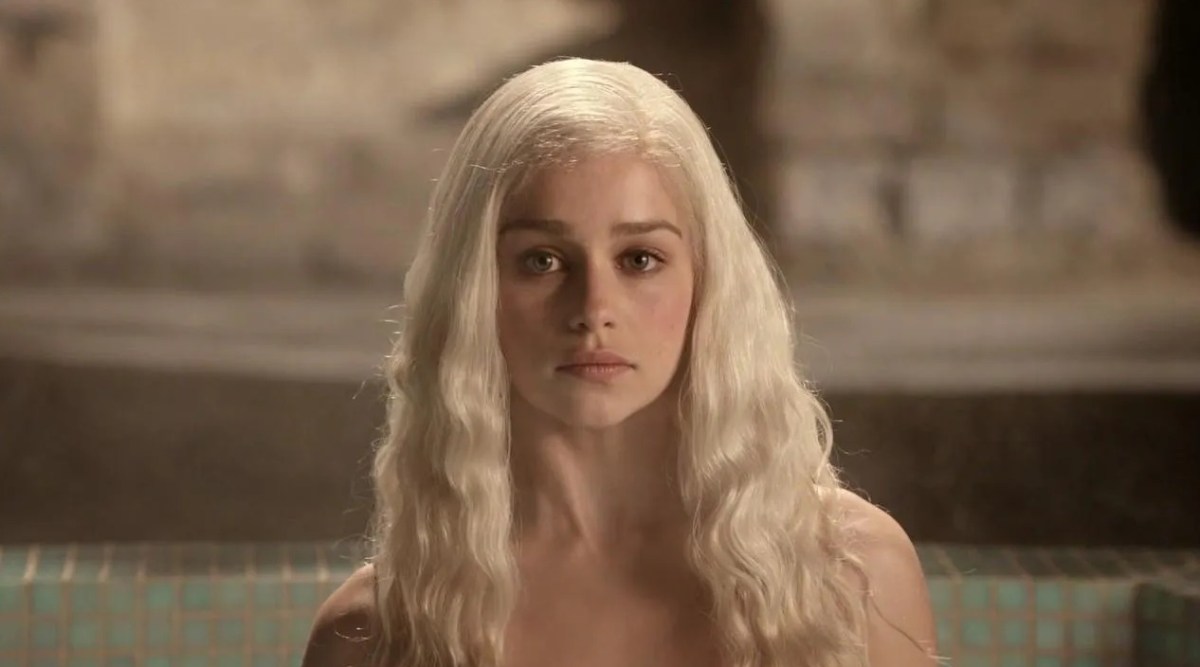
The prophecy of the Prince That Was Promised has been a long point of discussion for both avid readers of the books and viewers of Thrones. The person being referred to in the prophecy is also called Azor Ahai, and with the original prophecy itself being written in High Valyrian, its main subject has been slightly lost in translation because the Valyrian word for “prince” is actually gender-neutral, so unlike what most characters from Westeros would have us believe, we aren’t necessarily looking for a man to save the world in this situation).
It’s unclear when the prophecy first came to being—but according to the priestess Melisandre, it has been around for a thousand years. Again, by way of recollection, she explains, “There will come a day, long after a long summer, when the stars bleed and the cold breath of darkness falls heavy on the world. In this dread hour, a warrior shall draw from the fire a burning sword. And that sword shall be Lightbringer, the Red Sword of Heroes, and he who clasps it shall be Azor Ahai come again, and the darkness shall flee before him.”
So, Who is Azor Ahai?
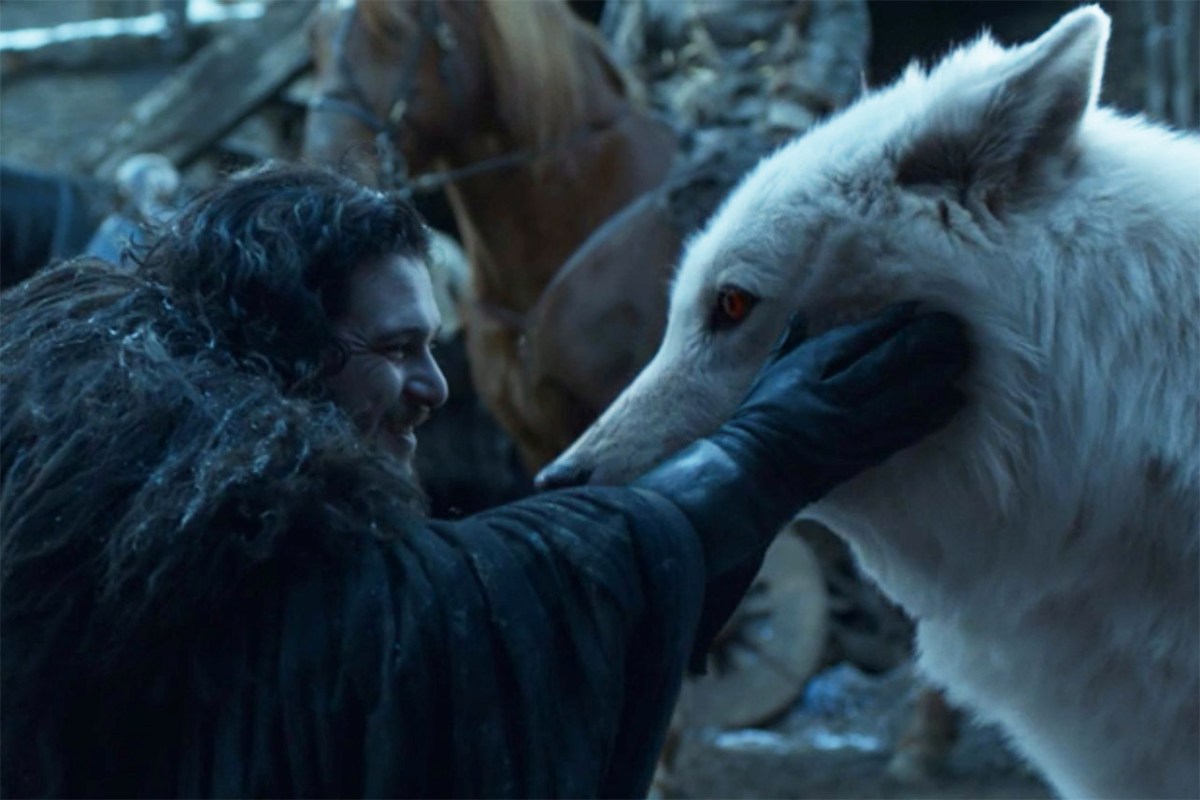
Rhaegar Targaryen is probably one of the most popular candidates when theorizing as to who exactly was the Prince That Was Promised or Azor Ahai. Rhaegar himself, along with several other characters like Maester Aemon and Barriston Selmy, appear to have thought the same. This largely stems from how Azor Ahai is said to be “born amidst salt and smoke, beneath a bleeding star” and Rhaegar was born as the Tragedy of Summerhall unfolded. Later on, Daenerys sees a vision of him calling his son Aegon as the prophesied prince, saying, “He is the prince that was promised, and his is the song of ice and fire.”
Still, considering that he died on the Trident, it doesn’t make sense for him to be Azor Ahai. Daenerys seems to be the better fit, given how she was born as a storm raged on in Dragonstone and as King’s Landing was being sacked, but her demise in Season Eight—which we are still mad about—negates this theory. There’s also Jon Snow and how he quite literally is ice and fire, with Rhaegar as his father and Lyanna Stark his mother, and how his real name is Aegon (like the Conqueror) but he wasn’t the person who killed the Night King and ended the Long Night. It was his sister, Arya. And she isn’t a Targaryen.
This is where the books are still at an advantage over the shows. We have yet to know how they end, which could make a seamless transition for reveals like this from House of the Dragon. As for Thrones, well, we can either consider these connections as retcons or worse: plotholes.
The Dagger
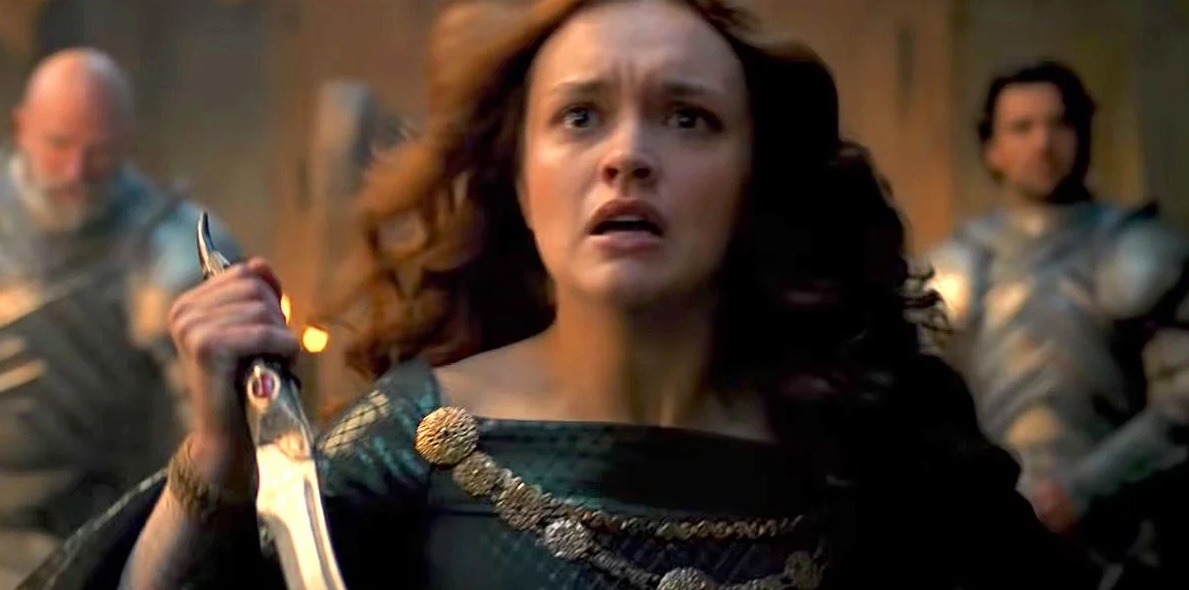
There’s another tidbit from the original show that makes a few important cameos on House of the Dragon: the Valyrian dagger that killed the Night King. In Episode Four, Viserys shows Rhaenyra that the prophecy itself is inscribed in the dagger and that it has been in their family since before the Conqueror. We first see the dagger back in Thrones’ first season, as the one that was used by a hired assassin to kill Bran Stark. Littlefinger confirms to Catelyn Stark that originally, he owned the blade before losing it to a bet to Tyrion Lannister. Catelyn then passes the dagger to Ned Stark, from whom Littlefinger steals the dagger back. Much later on, Littlefinger gifts the dagger to Bran as some sort of morbid gift, who in turn, gives it to his sister Arya, and we all know how that ends.
It is unclear whether Littlefinger knew the importance of the dagger or how he was able to get a hold of it in the first place, but considering how House Targaryen fell, it isn’t much of a surprise that their most precious items eventually passed to various hands.
The more interesting question (which I hope they cover in House of the Dragon) is how far down the line of Targaryen kings was the secret of Aegon’s dream passed. Did it ever reach the Mad King?
Have a tip we should know? [email protected]
